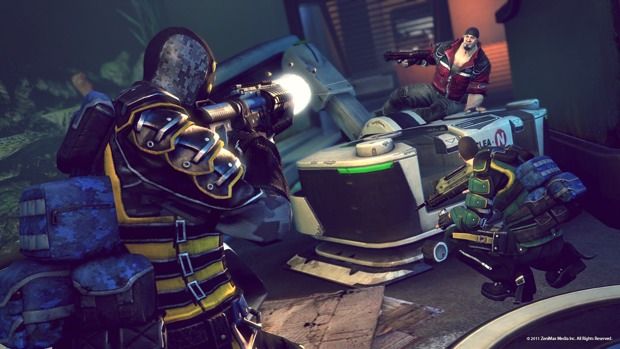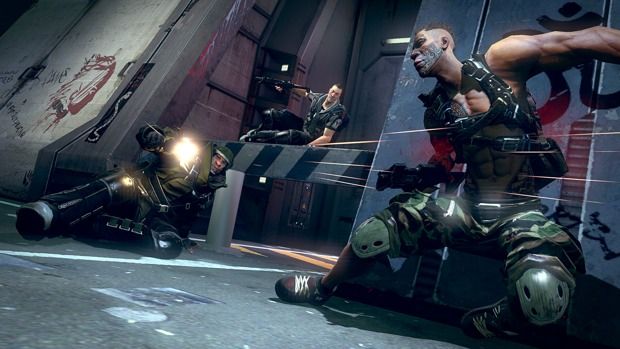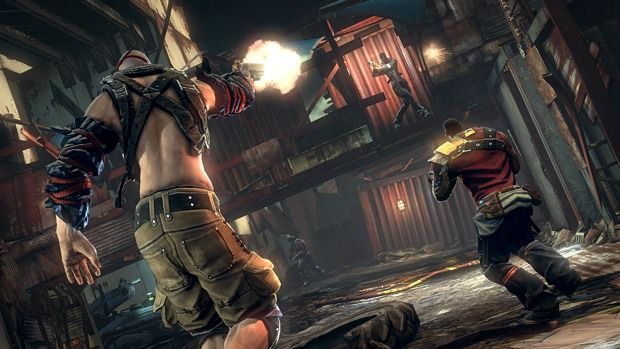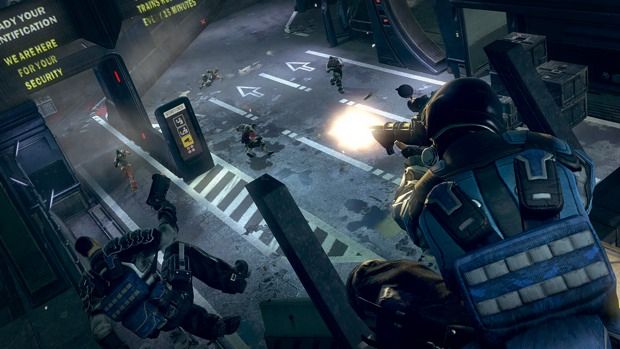There’s a big weight on Brink’s shoulders, and it’s the burden of our collective expectation. From the previews, the trailers and all the pre-release hype, we’ve come to expect a revolutionary FPS full of graceful Mirror’s Edge-style free-running and gritty sci-fi spectacle, that provides a seamless single-player and multiplayer experience. Now, it’s time to scale those expectations back. Take Brink for what it is - a cool team-based shooter in the style of Splash Damage’s previous games (Wolfenstein: Enemy Territory and Enemy Territory: Quake Wars) - and it’s a good example of the genre with a few rough edges and a handful of brilliant ideas. Expect something that’s instantly amazing, the new Team Fortress 2 or a powerful single-player experience, and you’re guaranteed some mild disappointment.
Our quick take
At heart, Brink is an enjoyable and highly addictive team-based shooter with the potential to be much more. With some tweaking, a little polishing, and a clutch of brilliant (and preferably free) DLC levels, it could still become a truly brilliant game. At the moment, though, it merely stands at the brink of greatness, too complex for the casual Call of Duty crowd, but not quite new or different enough to dazzle those who’ve come through Team Fortress 2, Battlefield and the rest. Brink is still good enough for a cautious recommendation, but it needs a bit more work to be the next big thing.
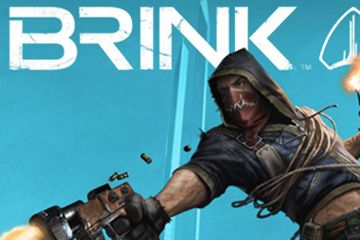
Brink - 3.5 / 5
| FOR | AGAINST |
|---|---|
|
|
The basic premise is intriguing. In the near future, a pioneering floating city - the Ark - is launched from San Francisco with a population of around 5,000. Then an environmental disaster strikes, the planet is flooded, and the population swells to ten times that figure. As happens, the Ark becomes divided between the wealthy elites in the capital and the hungry masses in the surrounding slums, and the situation only gets worse as supplies dwindle and the Ark decays. Before long a movement, the Resistance, arises from the slums bent on escaping the Ark and searching for a better life on land. In response, the elites build a military force, Security, designed to suppress the Resistance while their leaders endeavour to make contact with the outside world.
You’re introduced to all this stuff through a fairly gruelling run of introductory and tutorial videos, which Brink bribes you to stick through with the promise of experience points for your nascent character. The reason you might stick it out is that the game uses persistent characters, both online and offline, and as you level up you gain access to new weapons, clothes, decorations, capabilities and perks which make you a more stylish and effective fighter. The character creation and customisation, system turns out to be one of the game’s biggest selling points; with so many variations in terms of hair, costume, facial characteristics and accessories, its easy to create a resistance warrior or security trooper with their own distinctive look (the game maintains different models for the two, even if you play on both sides with the same character). Even the guns - of which there are actually too many - are fully customisable, with new sights, silencers and ammo cartridges that can be unlocked as you level up.
Brink is a complex game, and the best way to get into is not through the videos, but by pushing through the four Challenge missions. These give you a quick run through the abilities of the four classes - soldier, medic, operative and engineer - and a chance to get to grips with the fundamentals of assault, defence and parkour. The last is Brink’s most innovative game mechanic. With a quick tap of the left-bumper (on the Xbox 360), you switch into a sprint mode where your character will run forwards, automatically clambering over smaller obstacles and performing acrobatic leaps or heroic slides when you press the jump or crouch buttons. In theory, this makes Brink a faster-moving, more spectacular action game than similar multiplayer FPS games - but then you know that when we say “in theory” there’s a big “but” coming later on.
It’s when you get to the main Campaign mode that Brink reveals its true nature. Brink doesn’t really distinguish between single-player and multiplayer modes. Each side - Resistance and Security - gets the same basic missions, and you’re free to play them solo with bots, cooperatively with other players against bots, or in a versus style against human players (with bots filling in the numbers, where necessary). There’s no need to mess around searching for servers as Brink handles it all automatically, but you can opt to play with friends or invitees only, should you wish.
While each mission has an introductory cutscene and clear, evolving objectives, differing depending on which side you’re playing on, Brink still feels - at its core - like a multiplayer game. In our opinion, the bots do a pretty credible job of handling objectives and playing a supporting role, but Brink doesn’t have the pacing, development or narrative power to make a satisfying single-player game. This isn’t a disaster, provided you see solo play as practice for an excellent multiplayer effort. With the right team, the action is fast, there’s a nice flow from one objective to the next, and the interaction of classes and abilities works very well.
Certain classes are required to achieve specific tasks, and if your team is running short of one you can quickly switch class using the terminals scattered around the level. Provided you have soldiers who actually guard and assault, Engineers who provide support buffs and deploy turrets and mines and operatives who handle espionage and hacking duties - not to mention medics who look for people to heal - it’s all great fun. Brink also does a great job of not just offering you primary and secondary objectives, but allowing you to switch between them. Holding “up” on the D-pad gives you a wheel view of the current options, and you’re free to switch between them in a jiffy. Play with a good bunch of people who can vaguely work together, and Brink pushes all the same buttons as Counter-Strike, Wolfenstein: Enemy Territory and Team Fortress 2. It’s the sort of game you can easily lose hours to.
Of course, with a bad team it’s a bit of a nightmare. Some players concentrate on quick-and-easy objectives at the expense of those that are necessary to win the game, while others throw themselves into the fray willy-nilly, with no real consideration of their task or class. At its worst, a game of Brink can degenerate into a series of ridiculous, repetitive scraps over key choke points, won more through attrition than skill or tactics. This isn’t a new problem for online, objective-based shooters - and it’s one that Splash Damage has worked hard to solve. There’s just no quick fix for human nature.
There are, however, problems with Brink that are definitely faults of the game. The biggest is that for a game where free-running should play a major part, there’s not always that much opportunity to do it. There are few large open spaces full of ramps, walls, chasms to leap and crates to climb, while too many levels consist mostly of cramped corridors connecting larger chambers. As a result, you don’t actually see all that much parkour when you're playing. And while we haven’t seen any evidence of the game-killing lag that some of the game’s critics are complaining of, Brink isn’t technically perfect, either. Even with the day one patch, the graphics are a bit on the plain side, with the detailed, wonderfully caricatured human models and stylised lighting let down by some unimpressive, low-detail sci-fi scenery. To make things worse, there’s a certain amount of texture pop-in during play, even if its more obvious when the game begins than it is when the action hots up. Basically, Brink doesn’t look or feel like the state-of-the-art.
To recap
Brink is good enough for a cautious recommendation, but it needs a bit more work to be the next big thing

